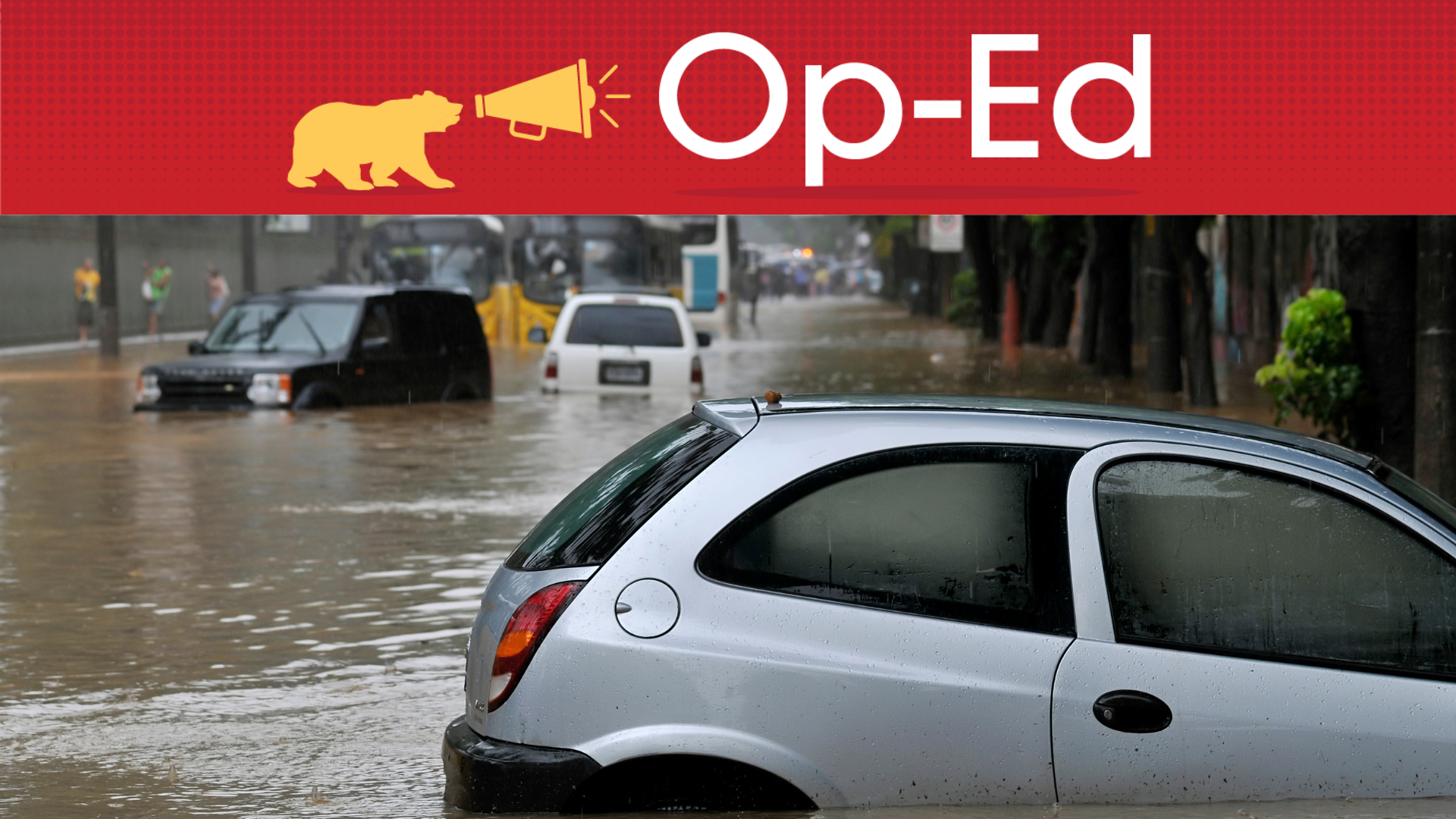The views and opinions expressed herein are those of the author and do not necessarily reflect the views of PublicCEO, its sponsors, its employees or any corporate relationships.
Op-Ed submitted by Jeremy Tamargo, associate director at NBS Utility Rate Group
One of the foundational rules at our house is “outside play every day.” This past month in Southern California has been a blast for my two little ones, as they enjoy nothing more than getting their rain gear on and stomping around in some big puddles. While Dad has also been having a great time, my civil engineering mind has been thinking about the bigger picture while getting all muddy with the kiddos.
Stormwater
As someone trained professionally in the field of stormwater design, I found myself reflecting on how unprepared California’s infrastructure is for the “new normal” of extreme and unpredictable weather events. As we have seen already this winter, these types of storms increase the danger faced by communities from floods and mudslides. Adapting to such higher intensity, shorter duration storm events will require a shift in how we envision and design our stormwater management systems.
A key piece of the adaptation strategy will be green infrastructure implemented on the local scale, which will allow communities to begin to adjust our built environments to better mimic the natural environment. Investments in green infrastructure are critical to helping capture stormwater runoff and mitigate the impacts of flooding on our communities.
Water Storage and Supply
The storms California experienced during last winter demonstrate how quickly above ground reservoirs fill up during high intensity storm events. The difference in water levels comparing November 2022 to January 2023 for Lake Oroville, one of California’s largest reservoirs, is incredible and illustrates the weather impact.
Higher intensity, shorter duration storm events will require expanded storage projects, both for above ground storage facilities as well as groundwater recharge infrastructure. While the rain has been good news for reviving above ground reservoirs, groundwater recharge still has a long way to go, and this source of supply is much more difficult to replenish. In an article in the San Francisco Chronicle, Paul Gosselin, deputy director of sustainable groundwater management for the California Department of Water Resources, said, “Even if we have a substantial wet year, it’ll take many years for basins to fully recover, if at all.”
Additionally, the state’s water conveyance infrastructure desperately needs modernization. Expanded and upgraded infrastructure will help transport stormwater to storage facilities as well as ensure that treated water continues to flow reliably and safely to the taps in our homes.
Looking to the Future
Solving California’s interconnected challenges facing our stormwater, water storage and water supply is critical. NBS has a powerful mission to be the experts in our field to help communities flourish with innovative and practical financial, consulting, and administrative advice and support. The next time you are splashing around in some puddles, and you start pondering how to address these topics in your local community, feel free to reach out to us. We’d love to talk and partner with you.
Since 1996, NBS has supported California municipalities with the implementation and ongoing administration of local funding tools. While the firm originally focused on special financing districts (SFDs), specifically the formation and administration of special assessments and taxes, we have evolved with our clients’ needs and now provide a full range of revenue consulting services. We focus on sustainable water and wastewater utility rate programs, cost allocation plans, cost recovery and legally justified fee design. Across all practice areas, we have worked with more than 500 public agencies to date, including cities, counties, school districts, utilities and special districts. This includes our recent effort, for example, of providing consulting services to the City of Sacramento in their successful attempt to get a stormwater (property-related) fee approved by the community.
 Jeremy Tamargo is an Associate Director in the NBS Utility Rate Group. He is professional civil engineer (PE OR) with almost a decade of experience in both the public and private sectors. Jeremy is committed to the work of supporting public agencies and the relationships he is able to build in the process. He is solutions-oriented, and he has a passion for focusing on excellence and sustainability on every project.
Jeremy Tamargo is an Associate Director in the NBS Utility Rate Group. He is professional civil engineer (PE OR) with almost a decade of experience in both the public and private sectors. Jeremy is committed to the work of supporting public agencies and the relationships he is able to build in the process. He is solutions-oriented, and he has a passion for focusing on excellence and sustainability on every project.
Do you agree with this op-ed? Do you disagree? Do you have another viewpoint you’d like to share on PublicCEO? Opine on an idea or share your insights in an op-ed. Submit one now.







